Cruise ships offer endless dining options, from elaborate buffets to specialty restaurants. However, not every dish deserves a spot on your plate. Some foods pose health risks or simply disappoint your taste buds. Smart cruise dining means knowing which items to avoid and which ones deliver unforgettable flavors worth the calories and cost.
1. Pre-Sliced Fruit from the Buffet
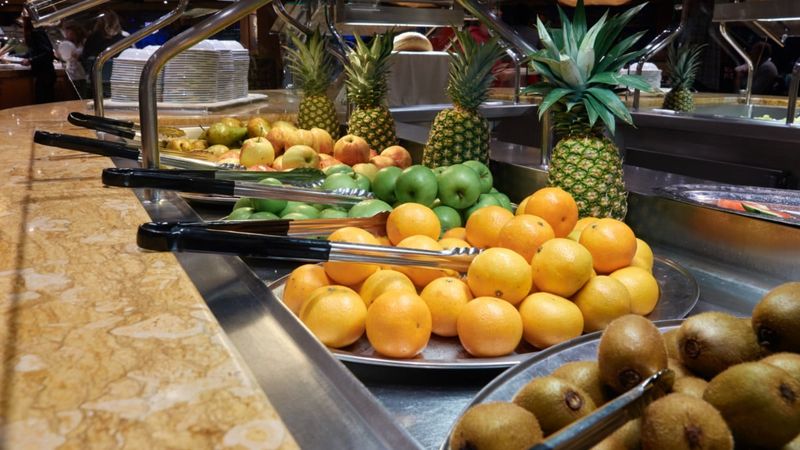
Buffet fruit sits exposed to air for hours, losing nutrients and freshness rapidly. Oxidation turns apples brown and makes berries mushy within minutes of cutting. Cross-contamination becomes a serious concern when hundreds of passengers use the same serving utensils.
Temperature control proves nearly impossible with open-air displays. Harmful bacteria multiply quickly on wet, sweet surfaces in warm environments. Fresh whole fruits from room service or the main dining room offer better taste and safety.
Your immune system deserves better than questionable fruit that’s been sitting under heat lamps. Choose packaged options or request fresh cuts from kitchen staff instead.
2. Day-Old Sushi Rolls
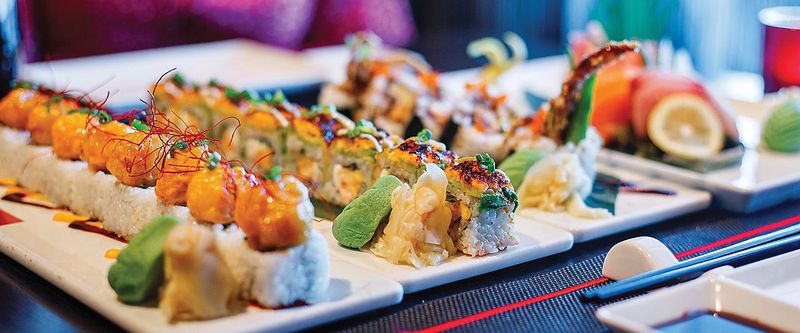
Raw fish has a very short shelf life, especially in cruise ship conditions. Yesterday’s sushi becomes today’s stomach trouble when proper storage temperatures fluctuate. Sushi rice hardens and loses its delicate texture after just a few hours.
Professional sushi chefs prepare fresh rolls multiple times daily for good reason. Cruise buffets often display the same rolls for extended periods to minimize waste. Visual cues like dried edges and separated ingredients signal it’s time to pass.
Specialty sushi restaurants onboard prepare fresh rolls to order. These venues maintain proper refrigeration and follow strict food safety protocols. Your taste buds and digestive system will thank you for the upgrade.
3. Raw Oysters or Clams
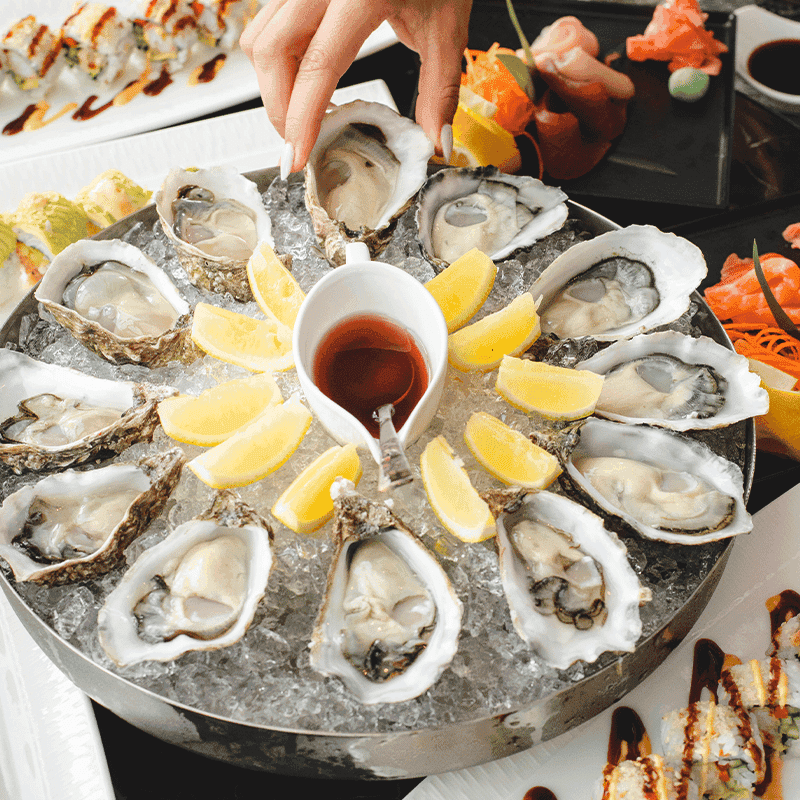
Ocean voyages make shellfish sourcing unpredictable and potentially dangerous. Vibrio bacteria thrives in warm seawater and causes severe food poisoning symptoms. Cruise ships can’t guarantee the harvest location or handling history of raw shellfish.
Refrigeration challenges at sea compound the risks significantly. Temperature fluctuations during loading and storage create perfect conditions for bacterial growth. Even healthy adults can experience violent illness from contaminated raw shellfish.
Cooked shellfish preparations like lobster bisque or steamed mussels offer safer alternatives. Professional kitchens use high heat to eliminate harmful bacteria while preserving delicious flavors. Save raw oysters for reputable shoreside establishments.
4. Undercooked Hamburgers
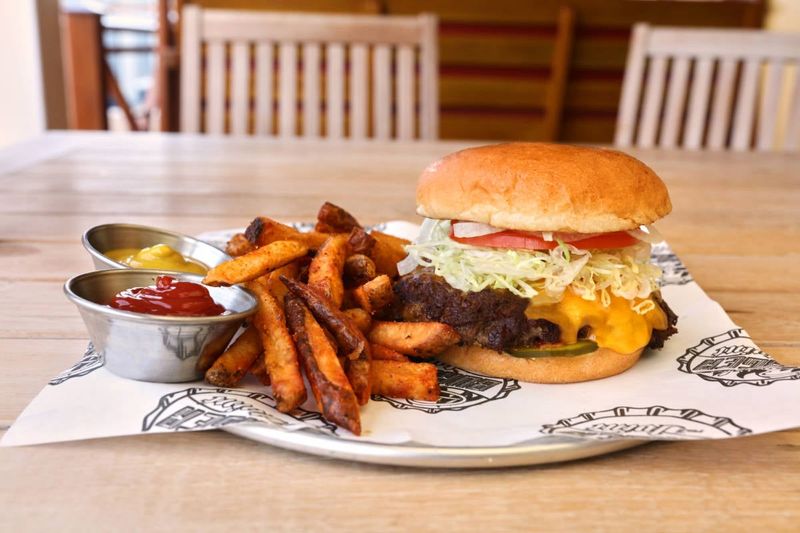
Ground beef requires thorough cooking to eliminate dangerous bacteria like E. coli. Pink centers in hamburgers signal inadequate internal temperatures that fail to kill harmful microorganisms. Mass food preparation on cruise ships sometimes prioritizes speed over safety.
Buffet grills operate continuously, making temperature control challenging throughout service hours. Staff turnover and training gaps can lead to inconsistent cooking standards. Contaminated ground meat affects multiple diners when safety protocols slip.
Well-done burgers might seem less appealing but protect your vacation from illness. Request your burger cooked thoroughly or choose whole muscle cuts like steaks instead. Many cruise lines offer excellent chicken or fish alternatives that cook more evenly.
5. Milk-Based Desserts That Aren’t Kept Cold

Custards, cream puffs, and tiramisu become bacterial breeding grounds without constant refrigeration. Dairy products spoil rapidly in warm cruise ship environments where air conditioning struggles against ocean heat. Sweet ingredients accelerate bacterial multiplication in milk-based treats.
Buffet dessert stations often lack adequate cooling systems for extended display periods. Pastry cream and whipped toppings separate and sour when temperatures rise above safe levels. Visual signs include weeping, curdling, or off-odors that warn of spoilage.
Packaged ice cream, frozen yogurt, or fruit-based desserts offer safer sweet endings to meals. Many cruise lines feature excellent gelato stations with proper freezer displays. Fresh fruit or chocolate-based treats without dairy provide delicious alternatives.
6. Cream-Based Buffet Dishes
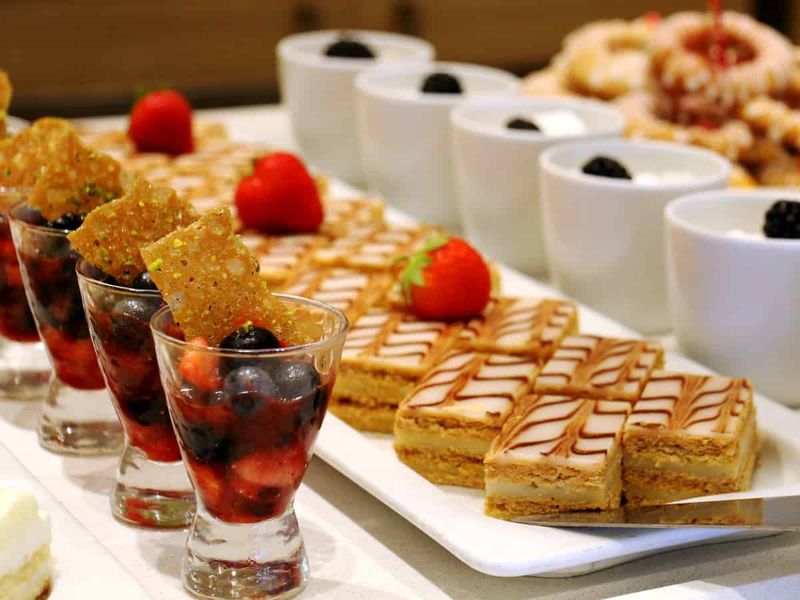
Alfredo sauce and cream soups develop dangerous bacteria when held at lukewarm temperatures for hours. Dairy-based dishes require precise temperature control that buffet warming trays can’t always maintain. Cream separates and curdles under heat lamps, creating unappetizing textures.
Large batch cooking means cream sauces sit longer before reaching serving temperatures. Bacterial growth accelerates in the danger zone between cold storage and proper heating. Multiple diners using the same ladles increase contamination risks significantly.
Tomato-based sauces and oil-based preparations hold better under buffet conditions. Made-to-order pasta stations prepare fresh cream sauces in smaller batches with better temperature control. Choose dishes that don’t rely on dairy for their base flavors.
7. Scrambled Eggs from the Buffet
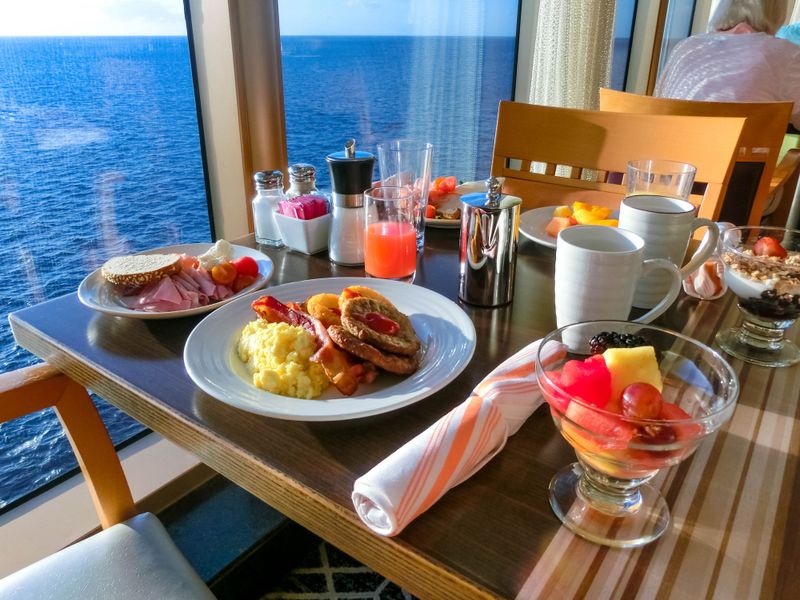
Buffet scrambled eggs sit under heat lamps for hours, becoming rubbery and losing nutritional value. Overcooked eggs develop sulfur compounds that create unpleasant tastes and odors. Mass preparation means eggs cook unevenly, with some portions dried out while others remain undercooked.
Steam tables can’t replicate the gentle heat needed for perfect scrambled eggs. Continuous warming breaks down protein structures, creating grainy textures that bear little resemblance to fresh eggs. Dried edges and separation indicate eggs past their prime.
Made-to-order omelet stations prepare fresh eggs with proper technique and timing. Chefs use appropriate heat levels and can customize ingredients to your preferences. Fresh eggs from room service or the main dining room also guarantee better quality and taste.
8. Room-Service Fried Food
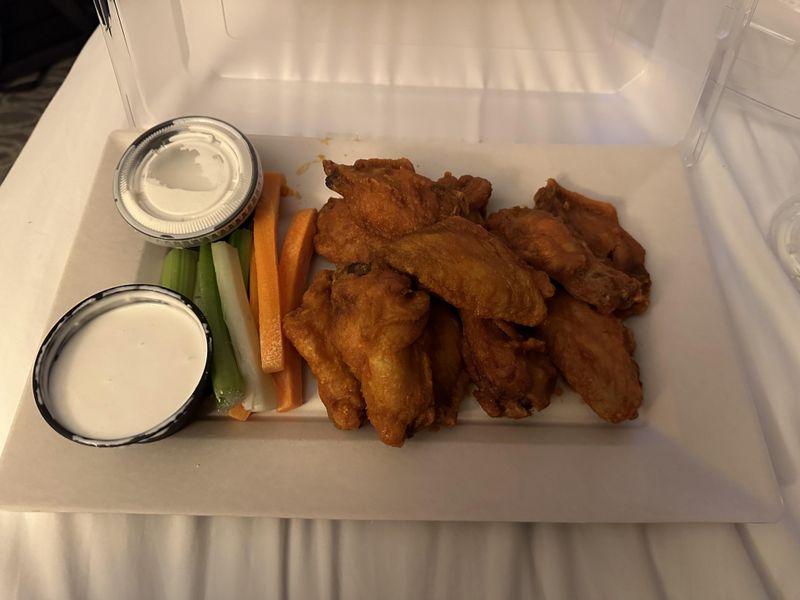
Fried foods lose their crispiness within minutes of leaving the fryer. Steam from covered room service plates makes crispy coatings soggy and unappetizing during delivery. Transport time allows grease to congeal, creating heavy, unpalatable textures.
Kitchen-to-cabin delivery takes longer than ideal for maintaining fried food quality. Covered plates trap moisture that destroys the contrast between crispy exteriors and tender interiors. Reheating attempts rarely restore the original texture and often make foods greasy.
Fresh salads, grilled items, or pasta dishes travel better and arrive in optimal condition. Many cruise lines offer excellent room service options that don’t rely on frying for their appeal. Save fried favorites for immediate consumption at restaurants and buffets.
9. Rotisserie Chicken or Carved Meats
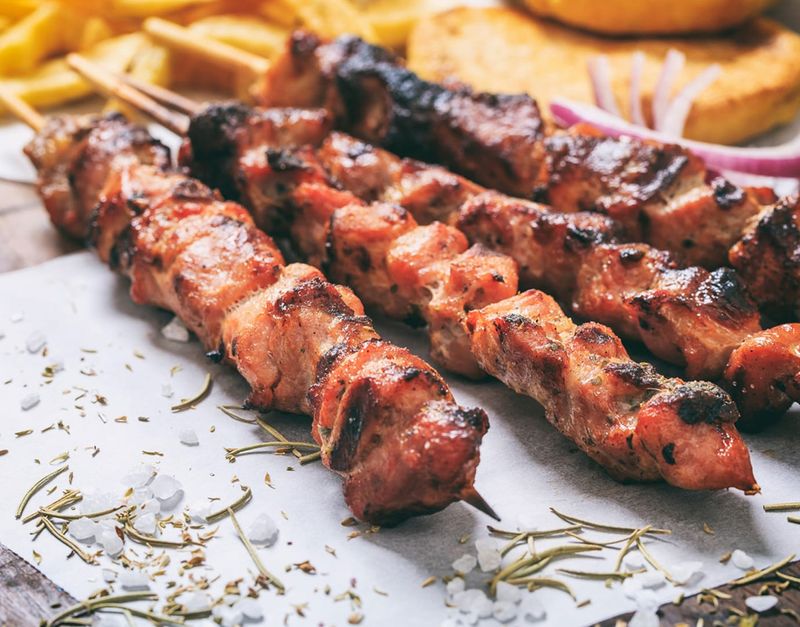
Slow-roasted meats retain moisture and flavor while cooking at safe temperatures throughout. Carving stations maintain proper heat levels and provide fresh cuts upon request. Professional chefs monitor internal temperatures and cooking times for consistent quality.
Rotisserie cooking creates self-basting effects that keep poultry juicy and flavorful. Visible cooking processes allow diners to assess freshness and doneness before ordering. Carved-to-order service ensures you receive the choicest cuts with optimal temperature.
These proteins offer excellent nutritional value with lower contamination risks than ground meats. Proper cooking techniques eliminate harmful bacteria while preserving natural flavors. Many cruise lines feature specialty carving stations with premium cuts and expert preparation methods.
10. Freshly Baked Breads
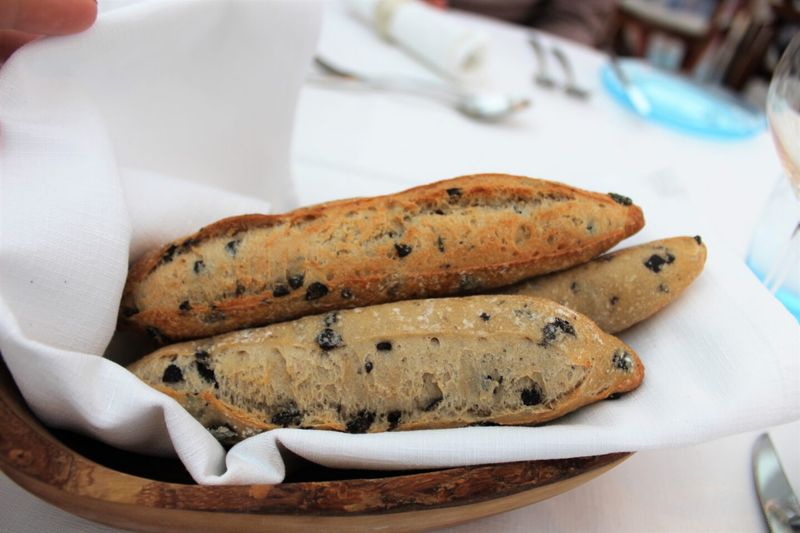
Onboard bakeries produce warm, aromatic breads throughout the day using traditional techniques. Fresh yeast and proper fermentation create complex flavors impossible to achieve with pre-made products. Steam injection ovens produce crispy crusts with tender, airy interiors.
Multiple baking cycles ensure constant availability of warm breads at peak freshness. Skilled bakers adjust recipes for sea conditions and varying altitudes during port calls. Artisanal techniques produce distinctive flavors that complement any meal perfectly.
Bread making requires minimal ingredients, reducing contamination risks while maximizing flavor potential. Fresh breads provide comfort food appeal that enhances dining experiences significantly. Many passengers consider warm dinner rolls a highlight of their cruise dining experience.
11. Grilled Fresh Fish
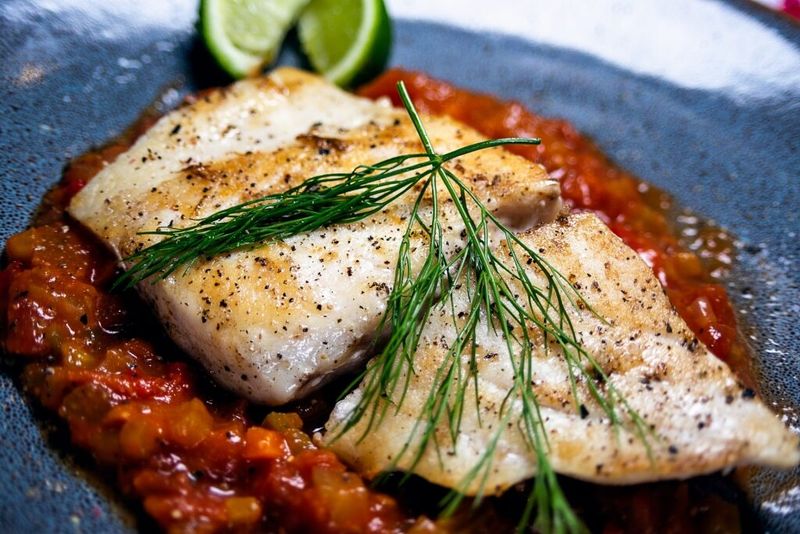
High-heat grilling seals in natural flavors while eliminating potential contaminants through proper cooking temperatures. Fresh fish selections change based on regional availability and seasonal catches. Skilled grill masters adjust cooking times for different fish varieties and thicknesses.
Grilled preparation highlights natural fish flavors without heavy sauces or complicated preparations. Quick cooking times ensure fish remains moist and flaky with attractive grill marks. Temperature control prevents overcooking while ensuring food safety standards.
Many cruise lines source fish locally at ports, providing authentic regional specialties and optimal freshness. Simple seasoning allows the fish’s natural characteristics to shine through. Grilled fish offers healthy protein options with minimal processing or additives.
12. Tropical Fruit from the Pool Bar or Main Dining Room
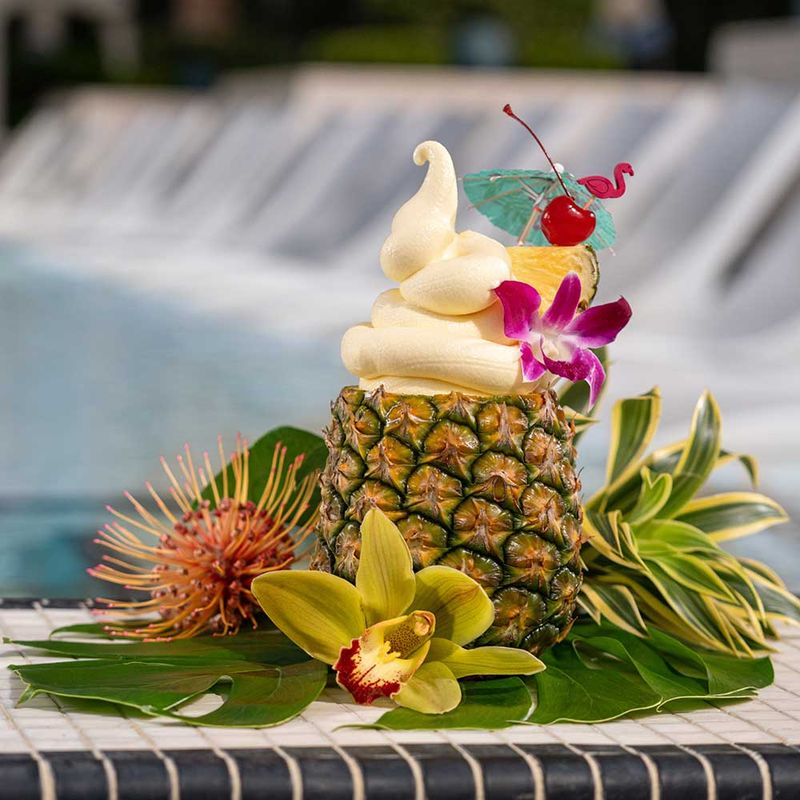
Pool bars and dining rooms receive frequent fruit deliveries to maintain peak freshness and quality. Whole fruits resist contamination better than pre-cut varieties while retaining maximum nutritional value. Professional staff prepare fruits to order, ensuring optimal ripeness and presentation.
Tropical destinations provide access to exotic fruits at their peak seasonal availability. Fresh preparation eliminates extended exposure to air and potential bacterial growth. Skilled staff can identify optimal ripeness and prepare fruits using proper sanitation techniques.
Made-to-order fruit preparations allow customization for dietary preferences and portion control. Pool bar locations often feature creative fruit presentations that enhance the vacation experience. Fresh fruit provides natural energy and hydration perfect for active cruise days.
13. Made-to-Order Omelets
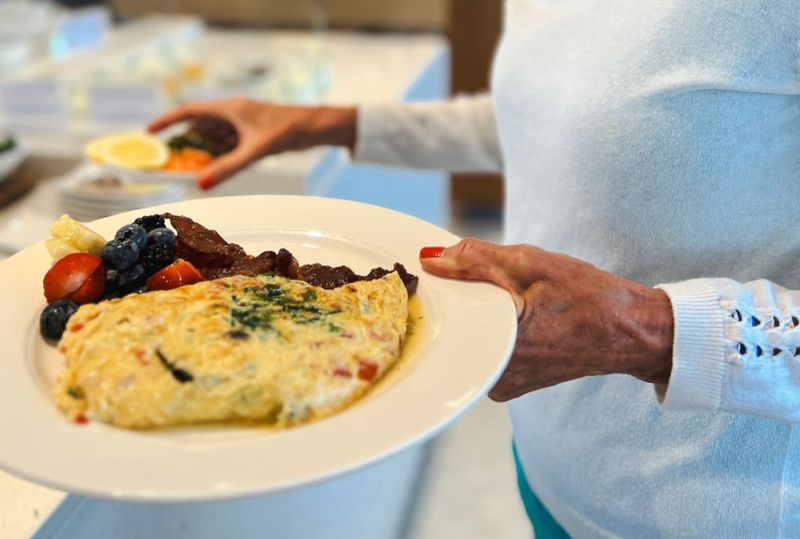
Custom omelet stations use fresh eggs cooked individually at proper temperatures for optimal texture and safety. Skilled chefs control heat levels and cooking times to create perfectly set eggs without overcooking. Personal preparation eliminates the extended holding times that compromise quality.
Fresh ingredient selections allow customization for dietary preferences and flavor combinations. Professional techniques ensure even cooking and proper folding for attractive presentation. Individual preparation prevents cross-contamination from shared serving utensils.
Made-to-order cooking guarantees optimal serving temperature and texture that buffet eggs cannot match. Interactive preparation adds entertainment value to the dining experience. Many cruise lines feature expert chefs who create signature omelet styles and flavor combinations.
14. Gelato or Packaged Ice Cream
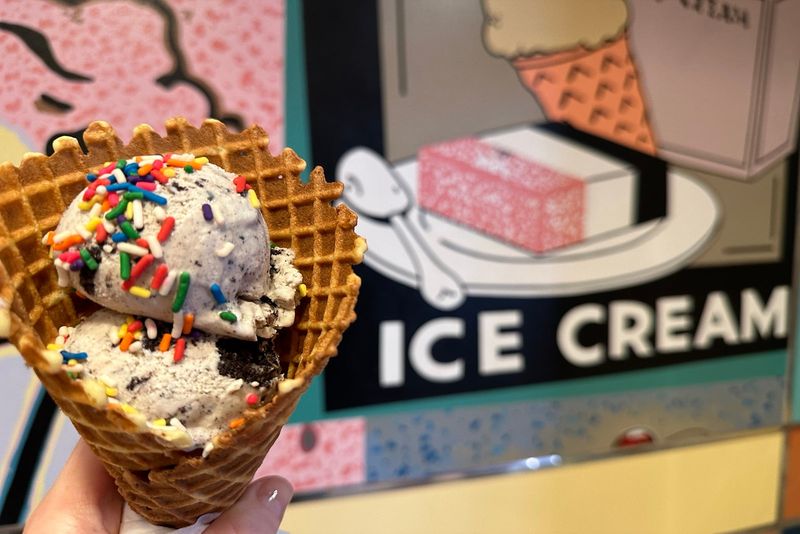
Proper freezer storage maintains ideal temperatures and textures for frozen desserts throughout the voyage. Gelato machines create smooth, dense textures with intense flavors that surpass traditional ice cream quality. Professional equipment maintains consistency despite ship movement and varying conditions.
Sealed packaging prevents contamination while preserving flavor integrity and nutritional content. Frozen temperatures eliminate bacterial growth concerns that affect other dessert categories. Multiple flavor options cater to diverse preferences without compromising safety standards.
Artisanal gelato preparation often occurs onboard using traditional Italian techniques and premium ingredients. Fresh fruit flavors showcase seasonal specialties from various ports of call. Cold desserts provide refreshing relief from warm weather and rich meal courses.
15. Chef’s Special or Regional Cuisine
Specialty dishes showcase culinary expertise and feature premium ingredients prepared with professional techniques. Regional cuisines reflect local port destinations and provide authentic cultural experiences. Executive chefs design specials to highlight seasonal availability and unique flavor combinations.
Limited preparation quantities ensure freshness and attention to detail impossible in mass-produced items. Professional presentation and plating elevate the dining experience beyond typical cruise fare. Specialized cooking methods and premium ingredients justify higher menu prices.
Chef specials often incorporate locally sourced ingredients from recent port visits for maximum freshness. Creative preparations demonstrate culinary skills and provide memorable dining experiences. These dishes represent the pinnacle of cruise ship culinary programs and showcase kitchen capabilities.
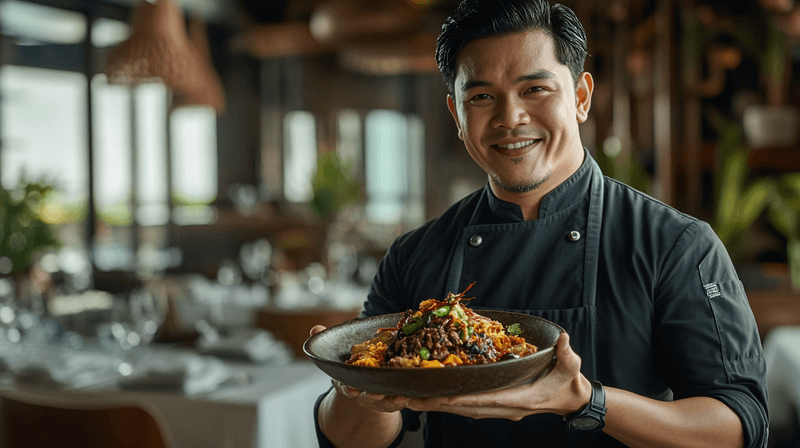
Leave a comment